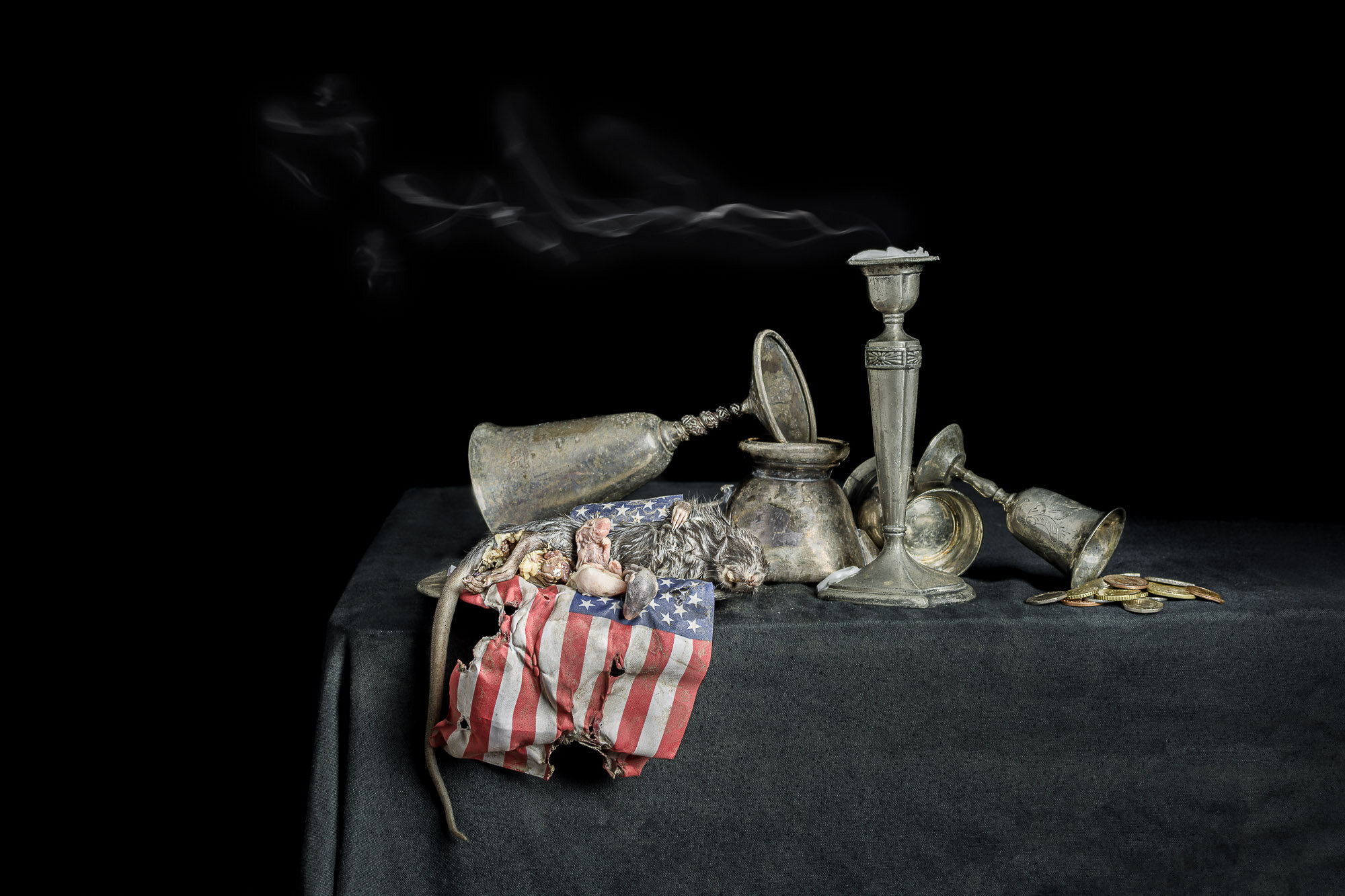American Flag: All is Vanity
Vanitas art emphasizes the transience of life, the futility of pleasure, and the certainty of death.
In classical still life, this message was encoded in the juxtaposition of reminders of mortality (skulls, animal remains, clocks, etc) with superficial markers of wealth and prestige (coins, expensive dishes, luxury food items, etc). Implicit in this pairing is a scathing critique of greed and consumerism–a reminder that the pursuit of wealth and status is a meaningless folly in the face of certain death.
While the anti-capitalist message at the core of vanitas paintings remains very relevant today, the specific symbols of wealth and status that were frequently employed may fail to resonate. For example: both books and lemons would have been understood as ostentatious displays of wealth by consumers of 17th century Dutch paintings. Obviously, those items fail to carry the same implications for most of us today.
Today, few items evoke images of crass consumerism and unfettered capitalism more effectively than the American flag.
The prioritization of corporate profit over human wellbeing is certainly not a uniquely American phenomenon; on some level, this pathology is intrinsic to capitalism. However, in the wake of the Trump presidency, the ugly core of capitalist ideology–profiteering, corruption, ostentatious celebration of material wealth, deification of the few wealthy elite–has been laid bare in a way that feels unprecedented.
We are now (hopefully) coming out of a catastrophic pandemic during which a handful of billionaires profited enormously, while the poor and weak and marginalized were asked to risk their lives in service of corporate profits. And while all this was happening, the president of the United States was spreading misinformation, ignoring the advice of medical experts, and intentionally downplaying the severity of the epidemic in hopes of bolstering his own reelection campaign.
At this particular moment in history, it seems fitting to take the American flag as a stand-in symbol for consumerism, corporate capitalism, and greed. (With all that being said, I certainly do understand that, like any symbolic item used in art, the flag simultaneously carries many different meanings, and these myriad implications are often contradictory. For the context of this work, I have very specific intentions.)
In this series of compositions, I have tried to maintain the aesthetics and philosophical underpinnings of classical vanitas paintings, while updating the iconography to be more relevant for modern audiences. Following the conventions of the genre, I placed symbols of consumer capitalism (desecrated American flags, bibles and crosses, coins of various currencies) alongside reminders of death (rotting animal carcasses and assorted gore).
Historically, vanitas art was more than a critique of frivolous consumerism and a nihilistic reminder of mortality. It was a call to higher service–a reminder that what we do with our limited time on this earth matters, and there are more worthy goals than the blind pursuit of profit above all else.
It is in that spirit that I present this work.
It is up to all of us to choose what we value and what kind of world we want to leave to our children. And I believe that there is still time for all of us to make better decisions in this regard.



